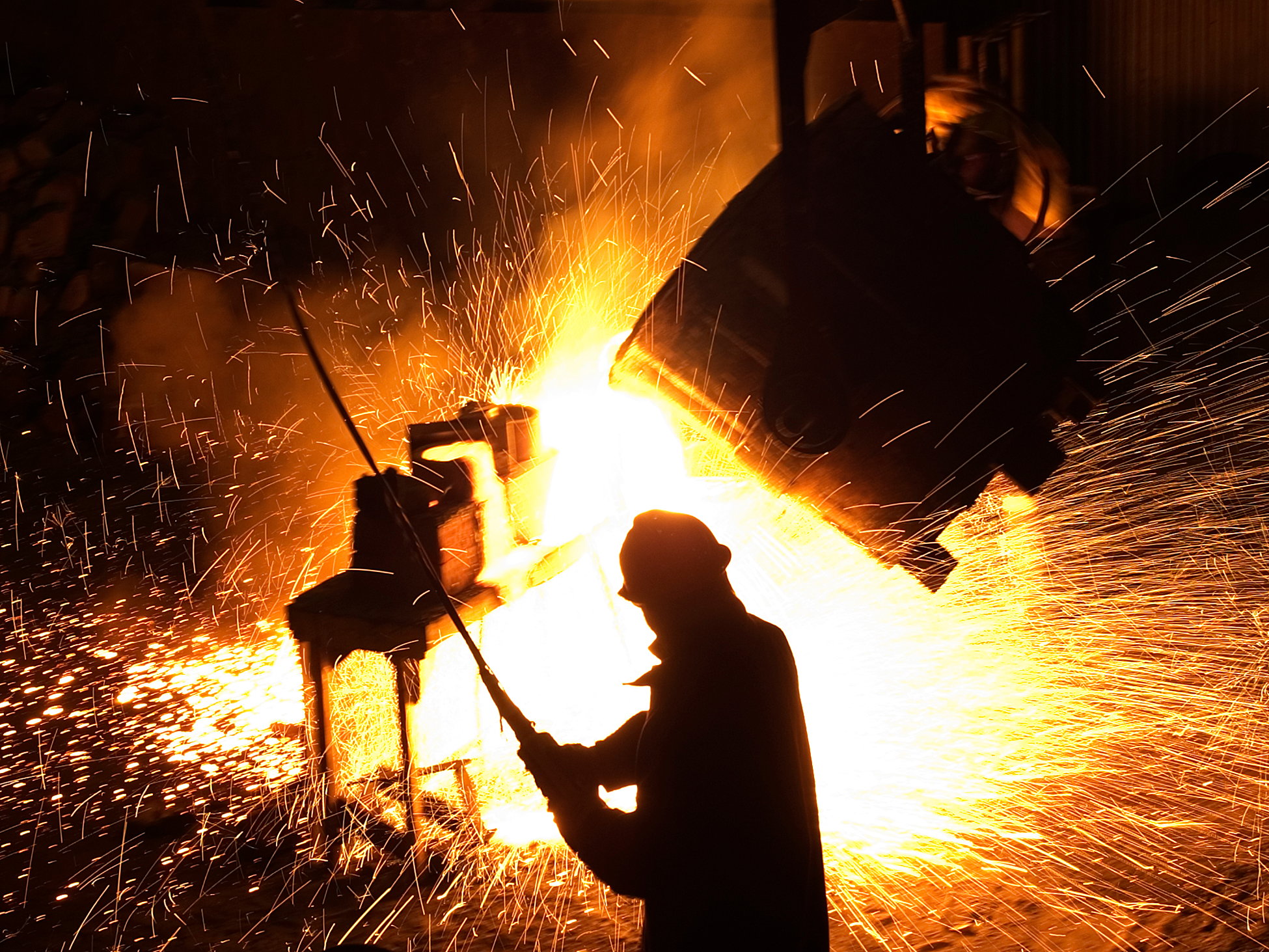
Cliffs Northshore Mine. Image source: Cliffs Natural Resources.
Steel production has fallen sharply in many areas of the world, as producers respond to falling demand from areas like construction, infrastructure, and capital equipment. As a consequence, the raw materials that go into producing steel have also seen substantial declines in price, and for iron ore company Cliffs Natural Resources (CLF 5.56%), the steel slump has put the entire company at risk. As it plans to release its second-quarter financial report on July 29, Cliffs Natural has many of its investors fearful about its ability to weather the poor conditions in the industry, and uncertainty about its immediate future has sent its stock price plunging. Let's take a closer look at Cliffs Natural and what to expect in its second-quarter report.
Stats on Cliffs Natural Resources
|
Analyst EPS Estimate |
($0.11) |
|
Year-Ago EPS |
($0.01) |
|
Revenue Estimate |
$572.22 million |
|
Change From Year-Ago Revenue |
(48%) |
|
Earnings Beats in Past 4 Quarters |
1 |
Source: Yahoo! Finance.
Can Cliffs Natural earnings surprise investors?
Interestingly, despite the pressure Cliffs Natural has been under lately, investors have been more optimistic about its near-term earnings prospects. They cut their loss estimates for the second quarter nearly in half, and they dramatically reduced their loss projections for the full 2015 year as well. Nevertheless, the stock has continued to sink, falling another 46% since mid-April.
Cliffs Natural's first-quarter results showed some of the pressure that the company has been under lately. Oversupply in its materials markets has kept iron ore prices at rock-bottom levels, contributing to a 28% drop in sales for the company. Yet with substantial fixed costs, Cliffs Natural hasn't been able to reduce its overall expenses to match falling production and sales, and that has weighed on profitability. Shareholders responded negatively to the report, as high levels of cash burn have made investors consider liquidity issues at the company to a greater extent than they would like.
Cliffs is starting to get some help from those who recognize the dire straits it is facing. In May, Canada's Economy Ministry said that it might seek to intervene in the Bloom Lake mining property, either by making it easier for a third party to purchase the property or potentially by buying a rail and port facility itself. By doing so, Canada hopes to get the mine up and running again to produce jobs in a hard-hit region of the country, but Cliffs Natural shares got a brief boost from the prospect of getting outside assistance.
Still, that didn't stop Cliffs from expanding its request for creditor protection, as it looked to add its Wabush iron ore mine in eastern Canada to the list of properties for which it has already sought legal action. The move is consistent with Cliffs Natural's broader strategy to focus on its core U.S. assets, but it raises considerable uncertainty about whether it will truly help the company recover.
In many ways, Cliffs Natural's prospects could rely on whether its rivals blink first. News of production cuts from one of its major competitors in Brazil helped send Cliffs Natural stock higher, as investors hoped that united action to curtail overall production could lead to an increase in pricing. Elsewhere, though, iron ore production appears to be moving full steam ahead even in the face of poor steel market demand, and that obviously bodes ill for Cliffs Natural's prospects.
In the Cliffs Natural Resources earnings report, investors need to get a better handle on its long-term strategy for growth. The biggest potential appears to be in the direct reduced iron arena, where Cliffs can serve local steelmaker customers using energy-efficient electric-arc furnaces for their production. If that goes well, then Cliffs Natural's proximity to its main market and its ability to produce high-quality iron ore will be crucial in navigating a turnaround. Without success in these and similar areas, though, it'll be increasingly challenging for Cliffs to keep financing its operations with iron ore prices at their current low levels.






